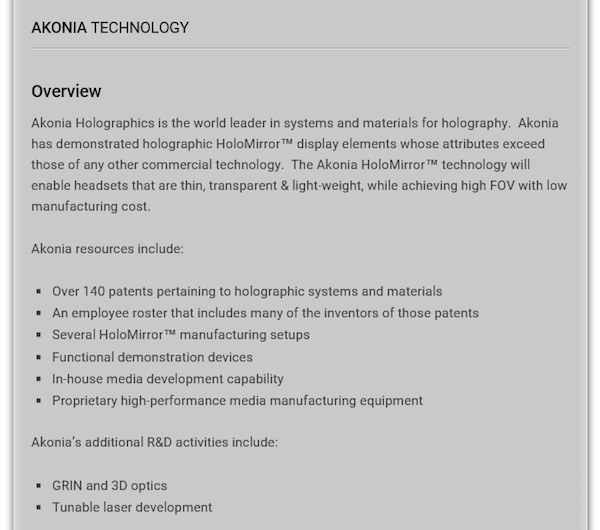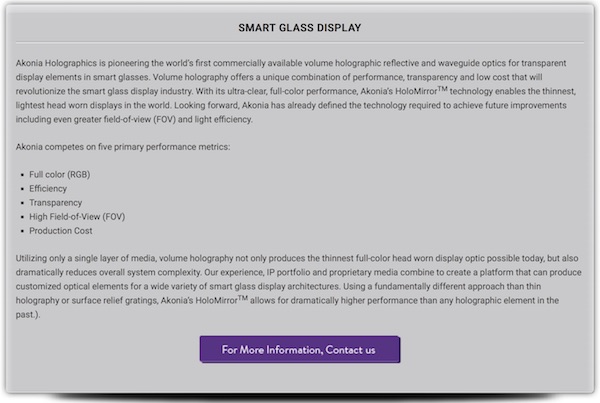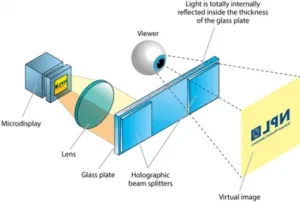Again, Apple to the rescue. While the current sales development of AR, VR, MR, or any other “R” you can come up with, is still somewhat of a sore point with market research firms, the ultimate goal of the “Next Big Thing’ is still dangling in front of our nose like the carrot in front of the donkey.

Since the release of the Magic Leap One was a little underwhelming for many analysts, the rest of the believers have been looking for another reason to keep believing in this concept of ‘expected unbelievable growth’.
The really big technology-driven business success stories of the last decade were the tablet and the smartphone. The development of both devices is, of course, driven in good part by Apple and many analysts seem to believe that if any form of A,M or V-Reality (increasingly known as xR – Man. Ed.) is to become a consumer success, we need Apple to step in and launch the device that will define the future of the tech world. Are you with me so far?
Of course there is a reason why Apple is so successful; they have good industrial design and a great marketing department. What is even more important is what Apple doesn’t tell us they have, the best market and consumer understanding. Every time in the last decade that they have launched a new consumer product, they had a very compelling story explaining what the consumer could do with the device after the purchase. I believe that this consumer viewpoint plays a dominant role in the Apple development process.
Are they fail-proof? No, they are not. Just think of the Apple TV, a great idea that failed mostly because the content owners didn’t want Apple in this game. There is always the content side of things (i.e. what you are doing with the new gadget once you brought it home), which is not under the control of the device manufacturer.
So, what is Apple going to save this time? The AR, VR, MR world of course. For some time, technology blogs have reported on the activities of Apple in regards to AR. Since the CEO, Tim Cook went out of his way to say that AR is the way fo the future, it didn’t need a whole lot of foresight to decide to follow Apple’s actions in this area. Of course, Tim Cook never said what aspect of AR is so interesting for Apple (the hardware or the software side or maybe both), so the analysts assume whatever makes the most sense at the time.

When Apple announced that it had bought the small development company Aconia Holographics, the expectations for an Apple AR headset went through the roof. Some financial analysts see AR as the driving force behind Apple exceeding the $1 trillion market cap by a significant amount. Indeed Aconia Halographics, a Colorado-based company, focuses on the development of holographic elements, which are a major component of AR and other reality headsets. When asked, the response from Apple is commonly known as “Apple buys smaller companies from time to time, and we generally don’t discuss our purpose or plans”. Okay we get it, you are not telling us your plans. Nevertheless, let us take a look at what Apple bought this time.
 Akonia Holographics Focus Area
Akonia Holographics Focus Area
Their roots are in the area of material development for holographic systems. This means storing holographic data on a plastic disk. The first target was holographic data storage, which could also be a target for Apple. However, this technology could also be used to create optical elements. Akonia Holographics noticed this as well and shifted their focus to developing holographic elements for a “Smart Glass Display”, as they call it. They also trademarked their technology as HoloMirror™, which enables the thinnest and lightest head worn display in the world.

According to the website, they created prototypes that compete with the best for color, efficiency, transparency, field-of-view, and production cost. This also means that they are looking forward to finding someone who can take their technology and find a successful application for their technology. According to their website they own a holographic media production line that was originally set up by Maxell in the late 2000’s. It is not clear if this line would be suitable to produce optical components based on their technology or not. Since the magic component is the photopolymer, this maybe possible.
This acquisition makes a lot of sense for Apple as they get their hands on a relatively cheap company (their seed funding was $11.6 million in 2012), that may have some very important base technology to develop some next generation smartglasses. If any of their claims prove to be true and related to the material technology, Apple has gotten a good deal by any measure. On the other hand, as it is developing display components, it does not sound as though we will see their results any time soon. While Akonia has an interest in selling its technology and will, therefore, show the positive highlights to any investor, Apple will be searching for all the weak points before they are willing to put their name behind any such product. As we discussed above, Apple is very good at fulfilling consumer’s expectations and they have to make sure there are no bad surprises. (NH)

